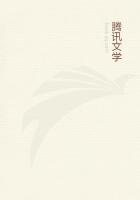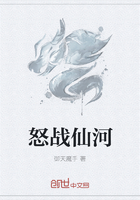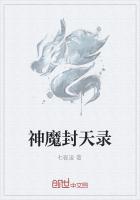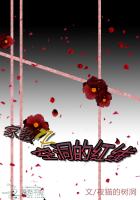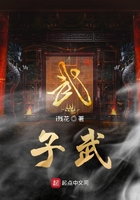A peculiar and distinctive feature of the cowboy's costume was his "chaps" (chaparejos).The chaps were two very wide and full-length trouser-legs made of heavy calfskin and connected by a narrow belt or strap.They were cut away entirely at front and back so that they covered only the thigh and lower legs and did not heat the body as a complete leather garment would.They were intended solely as a protection against branches, thorns, briers, and the like, but they were prized in cold or wet weather.
Sometimes there was seen, more often on the southern range, a cowboy wearing chaps made of skins tanned with the hair on; for the cowboy of the Southwest early learned that goatskin left with the hair on would turn the cactus thorns better than any other material.Later, the chaps became a sort of affectation on the part of new men on the range; but the old-time cowboy wore them for use, not as a uniform.In hot weather he laid them off.
In the times when some men needed guns and all men carried them, no pistol of less than 44-caliber was tolerated on the range, the solid framed 45-caliber being the one almost universally used.
The barrel was eight inches long, and it shot a rifle cartridge of forty grains of powder and a blunt-ended bullet that made a terrible missile.This weapon depended from a belt worn loose resting upon the left hip and hanging low down on the right hip so that none of the weight came upon the abdomen.This was typical, for the cowboy was neither fancy gunman nor army officer.The latter carries the revolver on the left, the butt pointing forward.
An essential part of the cow-puncher's outfit was his "rope."This was carried in a close coil at the side of the saddle-horn, fastened by one of the many thongs scattered over the saddle.In the Spanish country it was called reata and even today is sometimes seen in the Southwest made of rawhide.In the South it was called a lariat.The modern rope is a well-made three-quarter-inch hemp rope about thirty feet in length, with a leather or rawhide eye.The cowboy's quirt was a short heavy whip, the stock being of wood or iron covered with braided leather and carrying a lash made of two or three heavy loose thongs.The spur in the old days had a very large rowel with blunt teeth an inch long.It was often ornamented with little bells or oblongs of metal, the tinkling of which appealed to the childlike nature of the Plains rider.Their use was to lock the rowel.
His bridle--for, since the cowboy and his mount are inseparable, we may as well speak of his horse's dress also--was noticeable for its tremendously heavy and cruel curbed bit, known as the "Spanish bit." But in the ordinary riding and even in the exciting work of the old round-up and in "cutting out," the cowboy used the bit very little, nor exerted any pressure on the reins.He laid the reins against the neck of the pony opposite to the direction in which he wished it to go, merely turning his hand in the direction and inclining his body in the same way.He rode with the pressure of the knee and the inclination of the body and the light side-shifting of both reins.The saddle was the most important part of the outfit.It was a curious thing, this saddle developed by the cattle trade, and the world has no other like it.Its great weight--from thirty to forty pounds--was readily excusable when one remembers that it was not only seat but workbench for the cowman.A light saddle would be torn to pieces at the first rush of a maddened steer, but the sturdy frame of a cow-saddle would throw the heaviest bull on the range.
The high cantle would give a firmness to the cowboy's seat when he snubbed a steer with a sternness sufficient to send it rolling heels over head.The high pommel, or "horn," steel-forged and covered with cross braids of leather, served as anchor post for this same steer, a turn of the rope about it accomplishing that purpose at once.The saddle-tree forked low down over the pony's back so that the saddle sat firmly and could not readily be pulled off.The great broad cinches bound the saddle fast till horse and saddle were practically one fabric.The strong wooden house of the old heavy stirrup protected the foot from being crushed by the impact of the herd.The form of the cow-saddle has changed but little, although today one sees a shorter seat and smaller horn, a "swell front" or roll, and a stirrup of open "ox-bow" pattern.
The round-up was the harvest of the range.The time of the calf round-up was in the spring after the grass had become good and after the calves had grown large enough for the branding.The State Cattle Association divided the entire State range into a number of round-up districts.Under an elected round-up captain were all the bosses in charge of the different ranch outfits sent by men having cattle in the round-up.Let us briefly draw a picture of this scene as it was.


